Conflict Zones
Searching for Africa’s lost World War soldiers, a name and grave at a time | The World Wars

Nakuru and Kisumu, Kenya – Ogoyi Ogunde belonged to a proud family. His father had carved a home for their clan out of the earth in an area thick with bush, and accumulated a wealth of cows and grain. He provided for them, creating a vibrant community more than a century ago.
As the eldest son, Ogunde was his father’s greatest pride – strong, intelligent, fit to shoulder the privilege and burden of leading the clan in the future. So when conscription officers came to their village one day and singled out Ogunde for the war – a war they had never heard of, a war that had nothing to do with them – his father pleaded with them not to take him.
It was no use. The white men threatened him with jail, and carted Ogunde away.
“That was the last time anybody saw him there. He didn’t come back,” recounts Patrick Abungu. The loss of Ogunde broke his father’s spirit, and irreversibly shaped the trajectory of his descendents’ lives, including Abungu’s. “The war left a very big scar in my family,” he says.
Abungu heard this story countless times from his grandfather, who was Ogunde’s younger brother. Moving often as a child, his grandfather’s home in western Kenya was his anchor, and the stories he was told were the rudder that guided him in life. This particular story of Ogunde became myth, and then legend, and has gripped Abungu since he was a small boy.
His great-uncle was plucked from the shores of Lake Victoria by British colonial administrators to fight the Germans in World War I – during which he perished, along with tens of thousands of other Africans. The family was never notified of his death, told what happened, or shown a grave at which they could mourn. They received only deafening silence. And the questions that filled this void have haunted the family to this day.
But Abungu’s grandfather’s stories of Ogunde had a purpose. “I came to realise that he was preparing us. He did not want us to forget. He wanted us to find out,” he says. “And so when this chance came, I’d been prepared for that.”
The chance Abungu is talking about is his job – a very unique job that allows him to dig into the past, uncover its hidden secrets, and perhaps, one day, solve the mystery of Ogunde’s death.

No visible trace
Abungu slams shut the driver’s door of the silver Toyota Prado and looks at the metal gate in front of him. This seems an unlikely place for a burial ground. He is in the city of Nakuru, standing outside a metalworking yard called Jua Kali – a term used for the informal sector literally meaning “hot sun” in Swahili. Accompanied by his two colleagues, Mercy Gakii and Rose Maina, he walks over the black-stained ground, past flying sparks and burning torches, with the sharp smell of smouldering metal in his nose. The informal welders raise their heads as the three unusual visitors pass by, sticking out like sore thumbs in their immaculate matching attire.
The team is looking for 17 graves of Africans who died in World War II. They, like other African servicemen, were buried in so-called “native cemeteries” separate from where Europeans were laid to rest. Some of these were later abandoned, explains Abungu. Their names are commemorated on a collective memorial and their service records are known, but the location of their graves is not. According to information gleaned from his organisation’s archives, this cemetery is supposed to be 100 yards (90m) southwest of the Muslim cemetery in Nakuru – so most likely right here, where the welders have set up shop. If they were buried here, no visible trace remains. “It’s likely the graves are beneath,” Abungu says, looking around the yard. He pauses. “It feels bad.”
Tall and lanky, with close-cropped hair and a slender face, Abungu has a serious demeanour that quickly gives way to a broad smile. He wears black-rimmed glasses that darken when he is out in the field in bright sunlight, which is often. Abungu is heritage manager at the Commonwealth War Graves Commission (CWGC) in Kenya. The London-based organisation looks after the memory of those who died for Great Britain and the Commonwealth in the two World Wars and maintains thousands of cemeteries around the world, including in Kenya and other African countries. Despite often being seen as European wars, both World Wars left deep scars in Africa.
In Word War I alone, according to the CWGC, British forces employed around 50,000 African soldiers and more than one million African “carriers”, or porters who transported war materials. Most of these participated in the East Africa campaign, a series of brutal and arduous battles against German troops between 1914 and 1918 across the dense thickets, sprawling savannahs and impenetrable forests of what are now Kenya and Tanzania, as well as other countries. The unforgiving terrain rendered other means of transport impractical, making British (and German) troops rely heavily on carriers to transport supplies and weapons. One British soldier had on average about 15 porters, says historian David Masika of the University of Nairobi. The conditions were extremely harsh. Marches were long and arduous, through tough terrain, with porters carrying heavy loads in oppressive heat. Their nutrition was sparse and diseases ravaged the troops.
Amid the chaos of war, in 1917, the CWGC was founded by a Royal Charter. The human cost of World War I was at a scale never seen before, and the commission was set up to recognise that sacrifice. The founding principles of the organisation were to commemorate each person who died for the Commonwealth in war by name, in perpetuity, and to treat all equally. But this promise was not kept.

The Nakuru North Cemetery, only a few kilometres away from the welding yard, is an oasis of calm. Nestled amid a dilapidated public cemetery, the pristinely kept burial ground for World War I and II dead, managed by the CWGC, is made up of neat rows of light grey headstones, all equal in shape and size, in a bed of gravel. Planted around it are agaves, yellow daisies and silver-grey dusty millers. The space is the embodiment of dignity and respect. But walking along the rows of headstones, among the names, not a single African one can be found. “Some [dead] are looked after, while others are under the torches of Jua Kali,” notes Abungu solemnly.
“We know that there are tens of thousands who served and died in British service who are not commemorated in a way that was promised by the commission,” says George Hay, a historian at the CWGC. And most of these were in East Africa. This was known to the organisation for decades, but it took an explosive documentary to air in the United Kingdom in 2019 for it to act. A novel project – the Non-Commemoration Programme – was launched by the CWGC in 2021 to rectify this historical injustice and create meaningful remembrance for the descendants of soldiers and their communities today. It aims to do this by identifying missing names and burial grounds, reinstating neglected graves and creating new forms of commemoration. Hay and Abungu are part of this project. Three and a half years in, they now estimate that most likely 88,000 East Africans died for Britain in World War I – and that almost none were commemorated by name. By contrast, in World War II, more than 10,000 people served and died in East African forces, but all were commemorated by name, either listed on a collective memorial or with a headstone.
During World War I, some African soldiers and carriers died in the field and were buried by their comrades, while the majority passed away in military hospitals, Hay explains. The latter were likely interred in what are now civil burial grounds, often without any markers. Some graves may have been marked with simple wooden signs, but these were never formalised or properly recorded by military or other authorities. It was only after the war that the Imperial War Graves Commission, as the CWGC was then known, began the process of assuming responsibility for graves, relocating remains to more permanent cemeteries and erecting headstones. However, for the vast majority of African war dead, this never happened.
In stark contrast to places like France where the commission had direct access to information on deaths, in colonies such as Kenya it largely depended on colonial authorities and the military to provide the names of the war dead and locations of their graves. While the organisation was sometimes aware of burial sites, it was often told that no records existed, Hay explains. His team has since concluded that the commission too readily accepted this explanation. “It was never true … that the records weren’t there. They may not have been complete, but from what we’ve seen, they did exist.”

The decisions the commission made at the time were “imbued by language and thinking [that] was racialised” and “imperial in its outlook”, says Hay. This shines through unmistakably in official correspondence at the time. In 1920, George Evans, who would soon after become the commission’s Deputy Director of Works in East Africa, wrote that “most of the Natives who have died are of a semi-savage nature” and that the “erection of individual headstones would constitute a waste of public money”, as the CWGC notes in a report. For “those buried in the bush, as in the case of porters … some form of Monument characteristically depicting the Indian soldier, the African Askari and Porter” would suffice, he wrote. Such monuments were erected in Nairobi, Mombasa and Dar es Salaam, and don’t carry names.
Abungu’s great-uncle was most likely among these casualties. In a way, the heritage manager has been searching for what happened to Ogunde all his life.
Abungu has loved history since he was a child, a seed planted by his grandfather. “But it wasn’t an easy path,” he says. His decision to study history was not in the plans of his father, who preferred him to become a doctor. He chose information and communications technology instead and then entered the military. Afterwards, his brother George – a renowned Kenyan archaeologist who would later become director of the National Museums of Kenya – suggested he join him on a dig on the Kenyan coast. This was a fork in the road. And the new path led him to become a historian and heritage manager.
But it was always more than an interest in the past that drove Abungu. He cared about its impact today. “How do you use heritage as a resource for community development? … How do you translate this into a meaningful, relevant resource for the communities?” he asks. These questions burned inside of him. So when, one day, an email landed in his inbox about a job with the Non-Commemoration Programme, the stars seemed to align – the years of wondering about Ogunde, searching for his own purpose, questioning the role of heritage, all converged in that very moment. He realised, “there’s a possibility of getting Ogoyi Ogunde here,” Abungu remembers. “That’s the only chance.”

In search of burial grounds
With both hands firmly on the steering wheel – at precisely 9 and 3 o’clock – Abungu steers the car through traffic on the single-lane highway that leads from Nakuru to Kisumu in the far west of Kenya. He drives with confidence and care, and almost military precision. With an upright posture, he wears his uniform – khaki cargo trousers and a dark blue shirt with the commission’s name on it – like a badge of honour. Behind him sits his colleague, heritage supervisor Gakii. Her laptop is open on her lap, and she is staring at a spreadsheet listing war veterans, their service numbers and years of duty. “The psychological part is the race against time,” Gakii says about their work. “The people who have this knowledge are going so fast.” Abungu nods in agreement. “You realise the injustice and you try to make their voice heard before it’s too late.”
For almost four years Abungu and his team have been scouring the past. Going on information dug up by Hay and colleagues in the CWGC’s archives in London, the Kenyans have been travelling across the country looking for lost burial grounds. They travel once or twice a month on field trips such as this one to Nakuru and Kisumu. They speak to locals who might remember seeing graves or grave markings, spend hours walking across fields under the burning sun, and discuss with communities what forms of commemoration would be meaningful to them. At times, they’ve called in help from the British army, which has provided ground-penetrating radar. Meanwhile, others are combing through archives such as those of the Kenya Defence Forces, trying to find hitherto unknown names of Africans who died for Britain.
When it comes to World War II, the team is looking at different problems from those of World War I. All Africans who died in World War II were commemorated by name, either on a collective memorial or on headstones in the so-called “native cemeteries”. However, in the 1950s, some of these graveyards were deemed “unmaintainable” by colonial authorities and abandoned, such as the one likely under the metal working yard in Nakuru, Abungu explains. Names from those graveyards were then transferred to collective memorials. The team is now trying to find these missing burial grounds to ultimately memorialise and honour these spaces.
It’s slow, painstaking and exhausting work. Each conversation opens up another lead, another clue as to where a burial ground could be hidden. How long do you keep going before you give up? “We’re so close and yet so far,” says Maina, sighing, after yet another meeting with a person that didn’t lead to a smoking gun. But finding the location of a gravesite is one thing – getting confirmation for it is entirely another. Because digging up the earth, exhuming bodies or even doing DNA tests is not an option, the team needs eyewitnesses who might remember seeing the grave. And these are far and few between.

In Kisumu, a city nestled on the shores of Lake Victoria, Abungu and his colleagues get lucky. After several visits and countless conversations, they came across Jeremiah Otieno Sino. The 82-year-old is standing on an open field, next to a hospital, where a group of boys are playing football. He too used to play football here, Sino explains, as a child in the 1940s and 1950s. He points to the southern end of the field where a ramshackle vegetable garden has been planted. “There were headstones,” he says. He remembers graves of World War II soldiers who had died at the nearby hospital. This is what the team needed: confirmation of a “native cemetery” that had been abandoned sometime during the colonial period. Sino’s story is captured on camera. Abungu is satisfied.
It’s a small victory, but one as important as any other. Because for the team, every name counts, every grave deserves being chased. “The point of doing this work is to revisit that promise” – the promise of equal commemoration made by the commission at its founding – “and to try and deliver on it,” says David McDonald, the head of the Non-Commemoration Programme.
So far, more than 11,000 names of World War I servicemen not previously recorded have been uncovered in archives. Oral histories and first-hand accounts by World War II veterans have been recorded. The teams are narrowing down the locations of several lost gravesites. And working not only in Kenya but in other countries such as South Africa, Sierra Leone, Egypt and India, the project is striving towards its ultimate goal: to commemorate those who have previously been forgotten in a manner that is befitting of the communities they came from, and the times. A new memorial was unveiled in Cape Town in January and the commission is working on another one in Sierra Leone’s capital of Freetown.
But inherent in the programme’s work is one inalienable truth. “We can never get all the graves, all the names,” says Gakii. “The work will never be complete. It is endless.”
Abungu will continue the work as long as he possibly can, because for him, it is deeply personal. “I’d do this job for free if I had lots of money,” he jokes. With a grandfather who imprinted on him the importance of his heritage, and a very principled father, he feels a deep sense of obligation to all the Kenyan families whose loved ones left for the wars and never came back – who have felt the pain of not knowing their fate, like his family has. Abungu knows that he most likely will never locate Ogunde’s grave or find his name on a list in an archive. But he has accepted this. “I think I find him every day,” he says. Because every success he has at work translates to him personally.
“Every time we find someone, we find him.”

Conflict Zones
Sudan Paramilitary Claims Key Gains in Kordofan; Fighting Intensifies Near Khartoum

Khartoum, May 30, 2025 — Rapid Support Forces (RSF) deputy leader Abdel Rahim Daglo announced on Friday that RSF fighters would press their eastward advance toward Khartoum, claiming “great victories” in several strategic towns across Kordofan. Addressing troops at an undisclosed location, Daglo said that all armed groups within the Tasis coalition had joined his paramilitary ranks and were now operating in concert with the RSF.
According to Daglo, RSF units seized control of Al-Dubaibat and Al-Hammadi in South Kordofan state, as well as Al-Khawi in neighboring West Kordofan. “Our fighters have secured these areas after intense clashes with Sudanese Armed Forces (SAF) units and allied militias,” Daglo declared, adding that the momentum would not wane until the capital was within reach.
Sudan’s army, however, downplayed recent RSF advances as part of a “reorganization” campaign. A senior ally of the SAF—also the governor of Darfur—insisted that the military was regrouping and fortified its positions to counter what he described as “a temporary setback.” He maintained that the SAF’s strategic reserves remained intact and that front-line forces were being repositioned to mount a sustained defense of Khartoum.
As fighting has spread northward, the humanitarian situation in Khartoum has deteriorated sharply. With basic services all but collapsed, a deadly cholera outbreak has emerged in the densely populated capital. Aid agencies warn that the impending rainy season could exacerbate sanitation challenges, fueling further disease transmission. The United Nations has labeled the crisis “the world’s worst humanitarian emergency,” citing over 25,000 confirmed deaths and more than 3 million internally displaced persons since April.
International pressure has also mounted on Sudan’s transitional government. In late May, Washington imposed sanctions on Sudanese military leaders for the “alleged use of chemical weapons” against civilians. In response, the government announced a national investigation into the claims—a move it said was aimed at preserving Sudan’s international standing amid intensifying conflict.
With both sides entrenching their positions around Khartoum, observers warn that a protracted stalemate could unleash further civilian suffering. The RSF’s pledge to advance eastward has raised concerns that front-line engagements may spill into densely populated suburbs, where millions have already endured weeks of intermittent shelling and aerial bombardments. For now, the fate of Khartoum—and the broader prospects for peace—remain uncertain as paramilitary and army forces brace for a decisive showdown.
Conflict Zones
Two killed in Russian attacks on Ukraine before possible talks in Turkiye | Russia-Ukraine war News
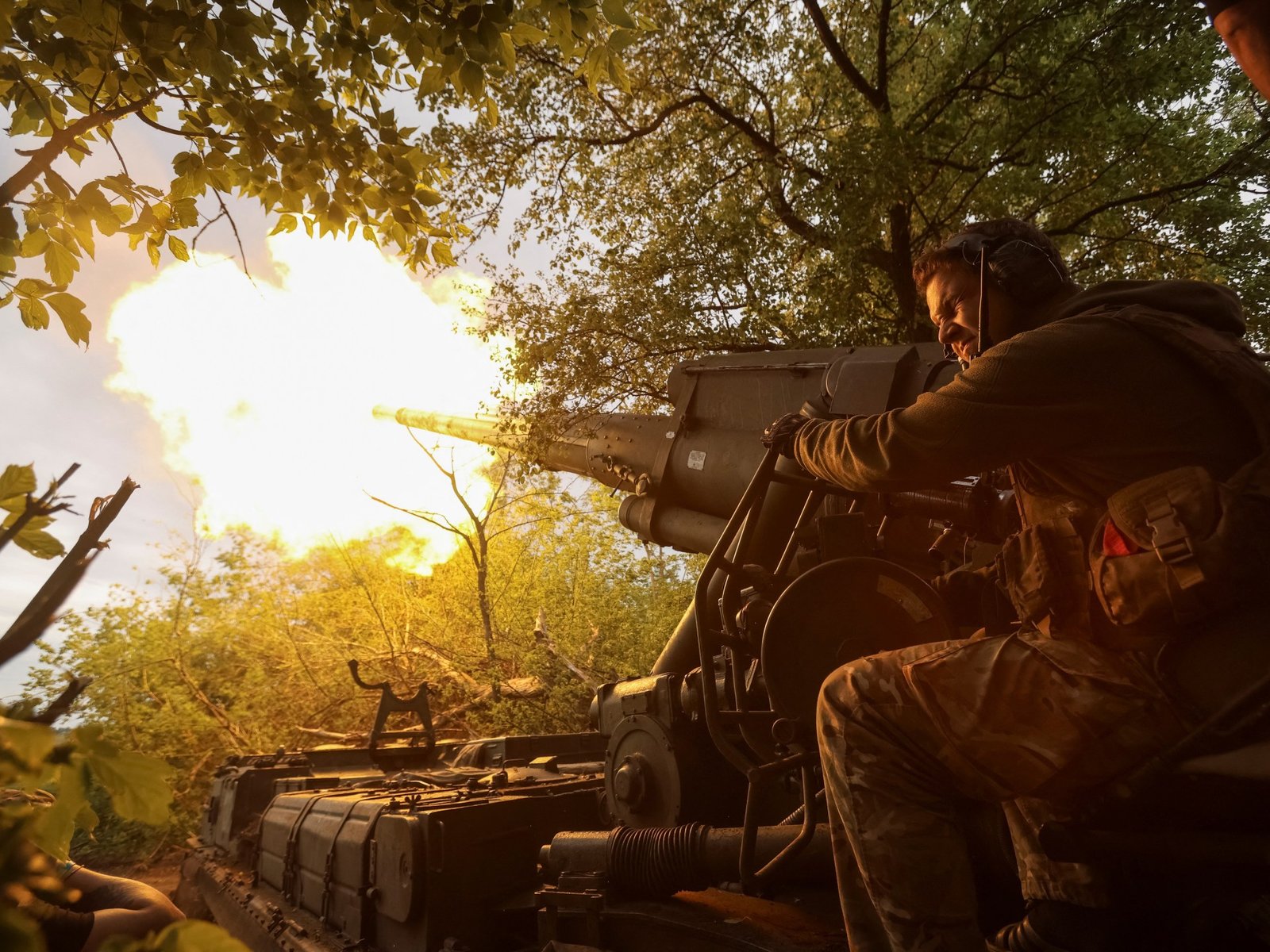
Russia has confirmed it will send a delegation to Istanbul, but Kyiv has not yet accepted the proposal.
Russian drone and missile attacks on Ukraine have killed at least two people, according to officials, as Ukraine ordered the evacuation of 11 more villages in its Sumy region bordering Russia.
Russian troops launched an estimated 109 drones and five missiles across Ukraine on Friday and overnight, the Ukrainian air force said on Saturday, adding that three of the missiles and 42 drones were destroyed and another 30 drones failed to reach their targets without causing damage.
The attacks came amid uncertainty over whether Kyiv will take part in a new round of peace talks early next week in Istanbul.
In the Russian attacks on Saturday, a child was killed in a strike on the front-line village of Dolynka in the Zaporizhia region, and another was injured, Zaporizhia’s Governor Ivan Fedorov said.
“One house was destroyed. The shockwave from the blast also damaged several other houses, cars, and outbuildings,” Fedorov wrote on Telegram.
A man was also killed by Russian shelling in Ukraine’s Kherson region, Governor Oleksandr Prokudin wrote on Telegram.
Moscow did not comment on either attack.
Meanwhile, authorities in Ukraine’s Sumy region said they were evacuating 11 villages within a roughly 30-kilometre (19-mile) range from the Russian border.
“The decision was made in view of the constant threat to civilian life as a result of shelling of border communities,” the regional administration said on social media.
Ukrainian President Volodymyr Zelenskyy has said some 50,000 Russian troops have amassed in the area with the intention of launching an offensive to carve out a buffer zone inside Ukrainian territory.
Ukraine’s top army chief, Oleksandr Syrskii, said on Saturday that Russian forces were focusing their main offensive efforts on Pokrovsk, Torets and Lyman in the Donetsk region, as well as the Sumy border area.
Syrskii added that Ukrainian forces are still holding territory in Russia’s Kursk region – a statement Moscow has repeatedly denied.
The evacuations and attacks came just two days before a possible meeting between Kyiv and Moscow in Istanbul, as Washington called on both countries to end the three-year war.
Russia has confirmed it will send a delegation, but Kyiv has not yet accepted the proposal, warning the talks would not yield results unless the Kremlin provided its peace terms in advance.
Zelenskyy said Saturday it was still not clear what Moscow was planning to achieve at the meeting and that so far, it did not “look very serious”.
Conflict Zones
Hegseth warns of China threat as Beijing’s top brass skip Singapore summit | Military News
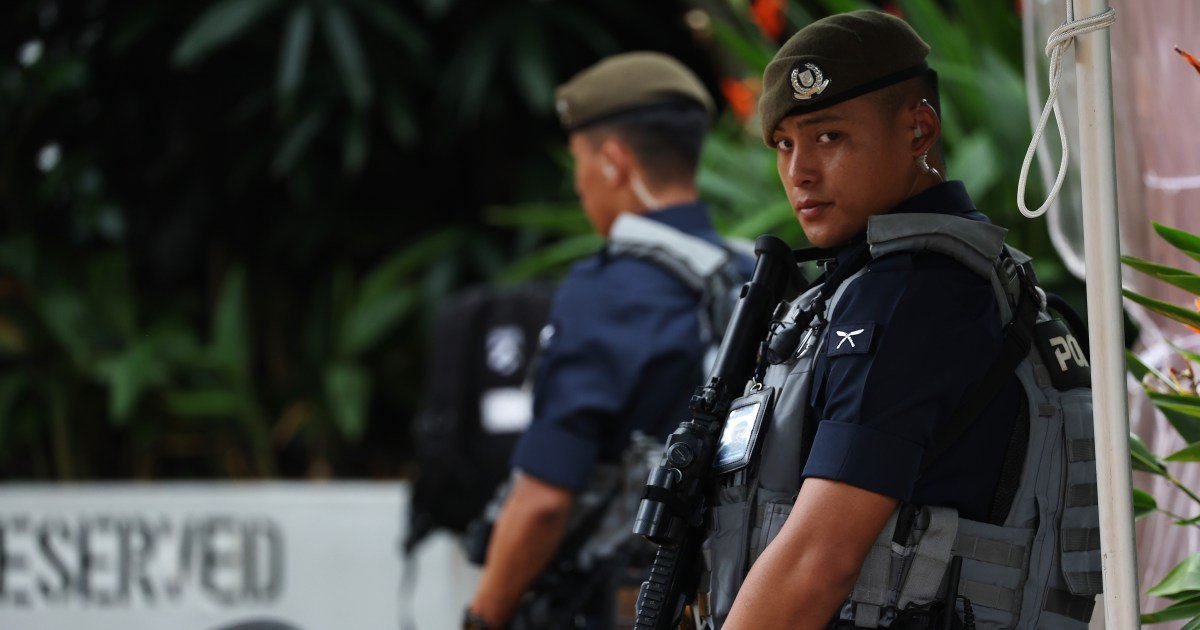
Singapore – Of the many military officials darting across the lobby of Singapore’s Shangri-La Hotel this weekend, there has been one significant absence.
China’s Defence Minister Dong Jun skipped the annual Shangri-La Dialogue, Asia’s premier security forum, with Beijing sending a delegation of lower-ranking representatives instead.
It was the first time since 2019 that China has not dispatched its defence minister to the high-level dialogue on regional defence, except when the event was cancelled in 2020 and 2021 due to the COVID-19 pandemic.
Beijing’s decision raised eyebrows in Singapore, coming at a time of heightened tensions between China and the United States – the world’s two biggest superpowers.
Dong’s absence meant there was no face-to-face meeting with his US counterpart, Secretary of Defence Pete Hegseth, who had the floor to himself on Saturday when he told the defence forum that the military threat posed by China was potentially imminent.
“It has to be clear to all that Beijing is credibly preparing to potentially use military force to alter the balance of power in the Indo-Pacific,” Hegseth told delegates in Singapore.
Pointing to China’s regular military drills around Taiwan as well as increasingly frequent skirmishes in the South China Sea, Hegseth said Beijing was proactively harassing its neighbours.
“There’s no reason to sugar-coat it. The threat China poses is real, and it could be imminent,” Hegseth said.
He also pointed to China’s growing military assertiveness as a reason for Asian nations to boost their defence spending, pointing to Germany, which has pledged to move towards spending 5 percent of its gross domestic product (GDP) on defence.
“It doesn’t make sense for countries in Europe to do that while key allies in Asia spend less on defence in the face of an even more formidable threat,” Hegseth said.
The defence chief also looked to reassure Asian allies that Washington was committed to Asia Pacific security despite strained ties in recent months as US President Donald Trump targeted some close allies with hefty trade tariffs.
“America is proud to be back in the Indo-Pacific, and we’re here to stay,” he said, opening his speech.
Some analysts were quick to play down the severity of Hegseth’s warnings about China.
“Short of a very few countries, not many in this part of the world see China as an imminent threat and would up their [defence] spending,” said Dylan Loh, assistant professor in the public policy and global affairs programme at Singapore’s Nanyang Technological University.
China tight-lipped on defence chief’s absence
In previous years, the Shangri-La Dialogue had provided a rare platform for meetings between Chinese and US officials in the more informal surroundings that the summit could offer.
The structure of the schedule also allowed Beijing’s military chiefs to directly respond to the keynote speech from the US defence secretary and to present their narrative to other members of the Asia Pacific.
Beijing has remained tight-lipped on the reason for Defence Minister Dong’s absence from the forum, fuelling an information void that has been filled by speculation.
One theory is that China did not want to send a high-profile delegate to the event at such a sensitive time as Beijing navigates the tariff war with the Trump administration.
“Any sort of faux pas or comments that may go off script can be picked up and picked apart or misconstrued,” said Loh, of Singapore’s Nanyang Technological University.
“So the question is why take the risk when US-China relations are at a very delicate point at this moment,” Loh told Al Jazeera.

The Shangri-La Dialogue weekend has not always been the easiest occasion for Chinese defence ministers. In recent years, they have faced difficult questions from their counterparts in other countries, who are unhappy with Beijing’s increasing assertiveness in the Asia Pacific region.
Loh said this could be another factor in Dong’s absence from the high-profile event.
“Any Chinese defence minister coming to Singapore now will be exposing himself and the country to political risk,” he said. “Themes like the South China Sea and possibly Taiwan will emerge, which makes China a convenient target,” Loh added.
Dong was appointed as China’s defence minister in late 2023, after his predecessor, Li Shangfu, was removed from office.
Less than a year into the job, there was speculation surrounding Dong’s new position following media reports that he was under investigation as part of a wider investigation into corruption in the Chinese military. Beijing denied the reports, with the minister continuing to maintain a public profile despite the allegations.
There has also been intense scrutiny of China’s military, following reports of an apparent purge of top-level officials by President Xi Jinping.
One of Beijing’s most senior generals, He Weidong, was missing from a high-profile political meeting in April, adding to rumours surrounding a possible restructuring in the People’s Liberation Army (PLA).
Ian Chong, a nonresident scholar at the Carnegie China research centre, said such speculation could be a factor in Dong’s no-show in Singapore.
“Because of the domestic turmoil with China’s senior military, they perhaps don’t want to, or the PLA itself feels that it’s not in a position to send somebody senior,” Chong told Al Jazeera.
Announcing Dong’s absence at a news conference before the summit, Chinese military spokesperson Senior Colonel Zhang Xiaogang maintained that communication channels were still open between defence officials in Washington and Beijing.
“China places great importance on US-China military ties, and is open to communication at different levels,” Zhang said.
-

 Africa4 days ago
Africa4 days agoSurvivor of Liverpool car ramming talks of shock and panic
-

 Sports3 days ago
Sports3 days agoThe Knicks are bringing hope and title dreams back to New York after years in the doldrums
-

 Lifestyle3 days ago
Lifestyle3 days agoChildren and careers: Talking to kids about what they want to be when they grow up
-

 Lifestyle4 days ago
Lifestyle4 days agoHow to decorate a patio, balcony or other small outdoor space
-
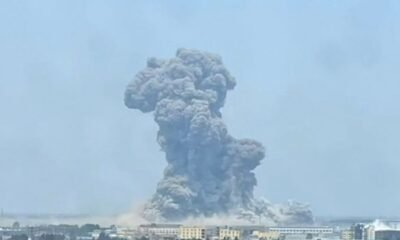
 Asia5 days ago
Asia5 days agoHuge blast rocks Chinese chemical plant, authorities launch rescue operation
-

 Lifestyle3 days ago
Lifestyle3 days agoFaizan Zaki hopes to go from spelling bee runner-up to champ
-
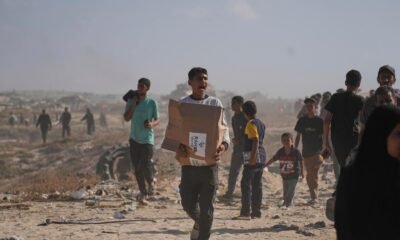
 Middle East4 days ago
Middle East4 days agoGaza’s aid system isn’t broken. It’s working exactly as designed | Humanitarian Crises
-
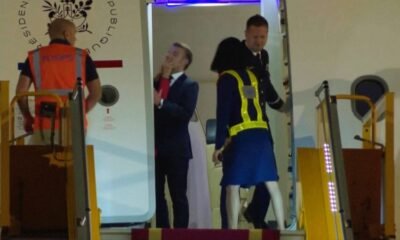
 Europe4 days ago
Europe4 days agoMacron’s marital shove disappears from French airwaves




